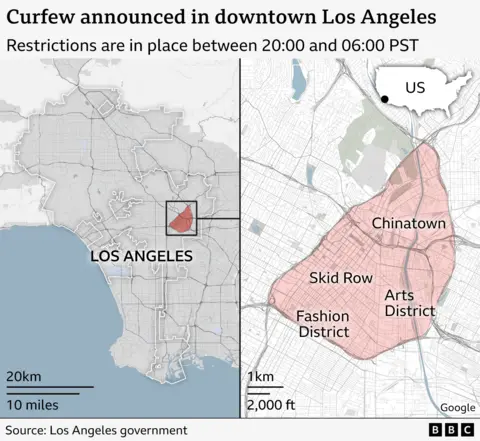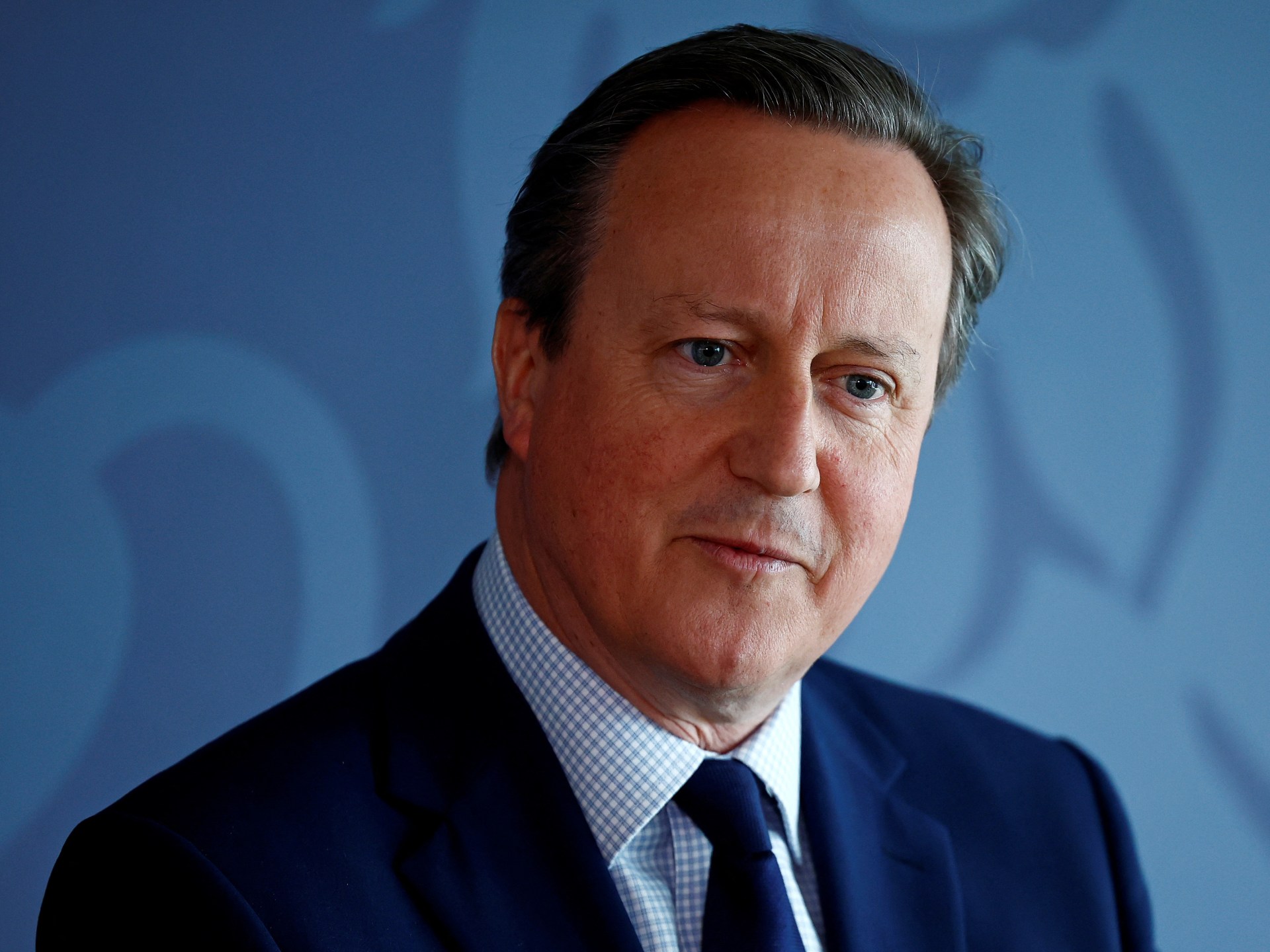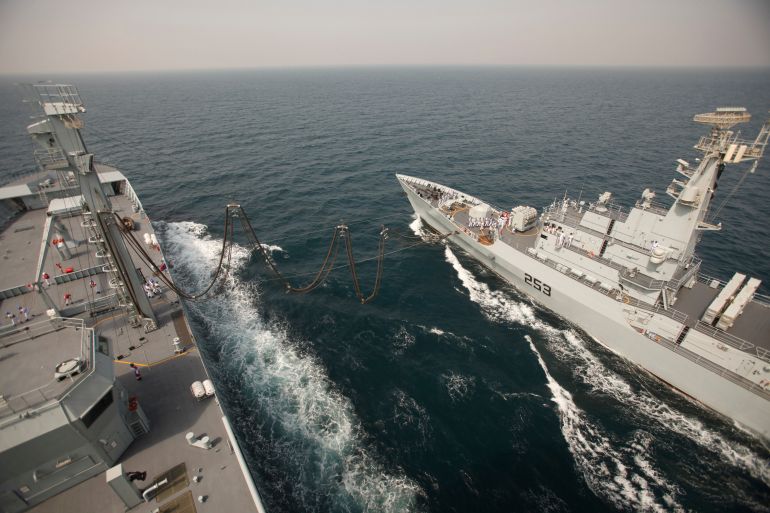US National Guard ‘expecting a ramp-up’ in immigration protests: official | Donald Trump News
The National Guard members deployed to the protests in Los Angeles have been trained to temporarily detain civilians if necessary, according to the troops’ commander.
Nevertheless, as of Wednesday, Major General Scott Sherman clarified that no troops have detained any protester, despite an earlier statement that suggested otherwise.
The National Guard’s deployment came in response to protests against United States President Donald Trump’s push for mass deportation, which recently targeted hardware stores and other businesses in southern California, prompting outrage.
Protesters flooded the streets starting on Friday to denounce the immigration raids. Trump responded by sending the military to the scene, denouncing what he considered “third-world lawlessness” in the city. Since then, however, the protests have spread beyond Los Angeles, to major cities in other parts of the country.
Speaking to reporters on Wednesday, Sherman said authorities “are expecting a ramp-up” in national unrest in the coming days.
“I’m focused right here in LA, what’s going on right here. But you know, I think we’re very concerned,” he said.
Sherman explained that 500 of the more than 4,000 National Guard members deployed to Los Angeles have also received training to assist Immigration and Customs Enforcement (ICE) in the immigration raids.
His remarks came as condemnation continues to grow over Trump’s decision to deploy the National Guard to California without the permission of the state’s governor, Gavin Newsom.
Since the National Guard arrived on Sunday, Trump has sent nearly 700 Marines to the Los Angeles area as well.
Los Angeles Mayor Karen Bass on Wednesday accused the Trump administration of using the military to escalate tensions in the city, where the protests first broke out on Friday.
“We started off by hearing the administration wanted to go after violent felons, gang members, drug dealers,” Bass said of Trump’s deportation push.
“But when you raid Home Depots and workplaces, when you tear parents and children apart, and when you run armoured caravans through our streets, you are not trying to keep anyone safe. You’re trying to cause fear and panic.
“And when you start deploying federalised troops on the heels of these raids, it is a drastic and chaotic escalation and completely unnecessary.”
Newsom, meanwhile, filed an emergency motion on Tuesday to block Trump from expanding the military presence in Los Angeles beyond federal buildings, with a court hearing set for Thursday.
Bass and Governor Newsom have maintained that local law enforcement were able to handle the situation before Trump intervened and that the military presence prompted more unrest, not less.
Speaking alongside 30 other California mayors and city leaders on Wednesday, Bass questioned if Trump was seeing how far he could push his presidential power.
“This was provoked by the White House. The reason why? We don’t know,” said Bass.
“I posit that maybe we are part of a national experiment to determine how far the federal government can go in reaching in and taking over power from a governor, power from a local jurisdiction.”
So far, Trump has maintained that the soldiers’ deployment was needed to protect federal property and agents — and was therefore within his executive authority.
He has not yet invoked the Insurrection Act of 1807, a federal law that would suspend prohibitions against the military directly taking part in domestic law enforcement. Until that happens, the troops are generally barred from making arrests.
Speaking during a news conference on Wednesday, White House spokesperson Karoline Leavitt repeated Trump’s claims that sending in the National Guard and Marines had prevented Los Angeles from spiralling into chaos.
She charged that Bass and Newsom had “shamefully failed to meet their sworn obligations to their citizens”.
“They’re attempting to use a violent mob as a weapon against their own constituents to prevent the enforcement of immigration law,” she said. “This is deeply un-American and morally reprehensible.”
Questions about ‘migrant invasion’
Amid the unrest, the Trump administration has pledged to continue its aggressive immigration raids, with officials last month setting a quota of 3,000 arrests a day.
Advocates say the pressure has motivated ICE agents to take increasingly drastic measures, targeting anyone in the country without documentation, even those who have not committed criminal offences and those with deep community ties.
Reporting from Los Angeles, Al Jazeera’s Phil Lavelle said authorities have been conducting blanket raids at Home Depot hardware stores, where undocumented day labourers often gather to find work.
At one location, labourers told Lavelle “that they will continue to come even though they know that these stores are being targeted – even though they know that they will be targets – because quite simply, they’ve got to work”.
“These are people who are communicating by WhatsApp and other methods,” Lavelle added. “If anybody is seen in the area who looks like an ICE agent, straight away, there are reports so that people know that they have to leave.”
So far, 61 Mexican nationals had been detained in Los Angeles during the recent raids, according to Mexican President Claudia Sheinbaum.
Trump has repeatedly claimed that the influx of migrants into the US constitutes an “invasion”, which in turn necessitates emergency actions.
Speaking on Tuesday from the Fort Bragg military base in North Carolina, he called the protests in California a “full-blown assault on peace, on public order and our national sovereignty carried out by rioters bearing foreign flags with the aim of continuing a foreign invasion of our country”.
But during a congressional hearing on Wednesday, the Chairman of the Joint Chiefs of Staff General Dan Caine was asked whether he believed the US was being invaded by a foreign power. His answer appeared to contradict Trump.
“I don’t see any foreign state-sponsored folks invading, but I’ll be mindful of the fact that there have been some border issues,” he said.




















































